The types of institutions for the enforcement of criminal sanctions in Serbia
In the Republic of Serbia, there are several types of institutions for the enforcement of criminal sanctions. Prison sentence and arrest measures for adults are enforced in penal-correctional institutions and district prisons.
Convicted persons on whom imprisonment up to one year (or two years, as an exception) has been imposed, whereas persons sentenced to imprisonment for more than one year are placed in penal-correctional institutions.
A juvenile prison sentence is enforced in the penal-correctional institution for juveniles, whereas in the case of female offenders, the prison for adults and a juvenile prison sentence is enforced in the penal-correctional institution for women. Special prison hospital is designed for the treatment of convicted and arrested persons, for the enforcement of security measures of compulsory psychiatric treatment and confinement in a medical institution, and for compulsory medical treatment of alcohol and drug addicts.
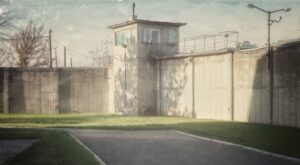
Photography 1. Penal-correctional institution for women in Požarevac. Author: Ana Batrićević. The photograph was made for the purpose of research about the greening of prison communities, the results of which were published in the book: Pavićević, O. Ilijić, Lj., & Batrićević, A. (2020). Susret društvenog i biološkog ozelenjavanje zatvorskih zajednica. Belgrade: Institute of Criminological and Sociological Research.
Security levels of institutions for the enforcement of criminal sanctions in Serbia
Depending on their security level, penal-correctional institutions can be classified as open, semi-open, closed, and closed with a special security regime. In open penal-correctional institutions, there are no physical or technical obstacles to escape, whereas, in semi-open institutions, security service staff represents the main barrier to escape. In closed institutions, apart from security staff, there are other physical and technical measures for the prevention of escape. Finally, in closed institutions with special security regimes, there are specific physical and technical barriers and measures providing the highest security level. Persons who committed criminal offences unintentionally and persons sentenced for the first time to imprisonment up to three years are sent to open penal-correctional institutions. Penal-correctional institutions for women, district prisons and educational-correctional institutions for juveniles are institutions of semi-open type. Special prison hospitals and penal-correctional institutions for juveniles are institutions of closed type.
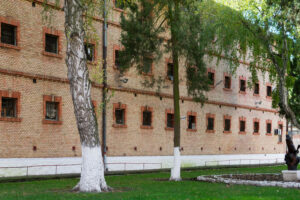
Photography 2. Penal-correctional Institution in Sremska Mitrovica. Author: Ana Batrićević. The photograph was made for the purpose of the research about greening of prison communities, and published in book: Pavićević, O. Ilijić, Lj., & Batrićević, A. (2020). Susret društvenog i biološkog ozelenjavanje zatvorskih zajednica. Belgrade: Institute of Criminological and Sociological Research.
- Open penal-correctional institutions in Serbia include, for example, the Penal-correctional institution in Belgrade – Padinska Skela, Penal-correctional institution in Sombor, the Penal-correctional institution in Ćuprija and the Penal-correctional institution in Šabac.
- Closed penal-correctional institutions in Serbia include, for example, the Penal-correctional institution in Niš, the Penal-correctional institution in Sremska Mitrovica, the Penal-correctional institution in Pančevo and the enal-correctional institution in Kragujevac.
- Examples of penal-correctional institutions with special security levels in Serbia are the Penal-correctional institution in Požarevac-Zabela and the Penal-correctional institution in Belgrade.
- Penal-correctional institution for women is located in Požarevac and belongs to the semi-open type of institution.
- Penal-correctional institution for juveniles is located in Valjevo and belongs to the closed type of institution.
In Serbia, district prisons are of a semi-open type, and they include, for example, District prisons in Belgrade, Vranje, Zaječar, Zrenjanin, Kraljevo, Kruševac, Leskovac Negotin, Novi Pazar, Novi Sad, Prokuplje, Smederevo, Subotica, Užice and Čačak.
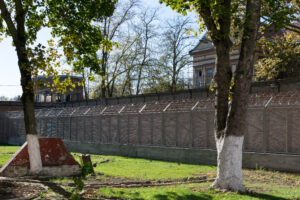
Photography 3. Penal-correctional Institution in Sremska Mitrovica. Author: Ana Batrićević. The photograph was made for the purpose of the research about greening of prison communities, and published in book: Pavićević, O. Ilijić, Lj., & Batrićević, A. (2020). Susret društvenog i biološkog ozelenjavanje zatvorskih zajednica. Belgrade: Institute of Criminological and Sociological Research.
Departments in the institutions for the enforcement of criminal sanctions in Serbia
In the institutions for the enforcement of criminal sanctions, open, semi-open and closed departments can be established. In open institutions, there are semi-open and open departments, while closed departments can be established, as well. In the institutions of closed type, there are closed, semi-open and open departments. In district prisons, there are closed, semi-open and open departments. In the Penal-correctional institution for women in Požarevac, there are closed, semi-open and open departments and a special department for convicted female juveniles. In the institutions where the measure of arrest is enforced, there are special closed departments for the enforcement of this measure. In the institutions where the punishment for administrative offences is enforced, there are special departments for the enforcement of this type of punishment.
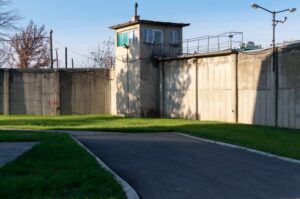
Photography 4. Penal-correctional institution for women in Požarevac. Author: Ana Batrićević. The photograph was made for the purpose of the research about greening of prison communities, the results of which were published in book: Pavićević, O. Ilijić, Lj., & Batrićević, A. (2020). Susret društvenog i biološkog ozelenjavanje zatvorskih zajednica. Belgrade: Institute of Criminological and Sociological Research.
After entering the institution, the convicted person is always directed to the admissions department, where he/she can stay for a maximum of thirty days. In the admissions department, the personality of the convicted person is studied, and the degree of risk is assessed as well as his/her individual needs and capacities for change with the purpose to determine individualised treatment programmes and classification in closed, semi-open or open wings. Classification of convicted persons is applied following different criteria, which include risk degree, type of criminal offence, a form of guilt, previous conviction, etc.
During the enforcement of the prison sentence, depending on the fulfilment of the treatment programme, the treatment programme can be modified and the convicted person can be subsequently directed to a group with a higher or lower degree of special rights and benefits. When the convicted person fulfils the treatment programme and individual goals, or when a lower degree of risk is subsequently estimated, he/she can be sent to a group with a higher level of special rights and benefits. On the contrary, the convicted person can be subsequently sent to a group with a lower degree of special rights and benefits on the grounds of disciplinary punishment for a more severe violation of rules or due to subsequently determined higher risk level, as well as on the grounds of disciplinary punishment for a less serious violation of rules or because of a new criminal procedure or newly imposed punishment.
Specific characteristics of a prison sentence for organised crime in Serbia
For criminal offences that are considered an organised crime in accordance with the Law on organisation and jurisdiction of state bodies in the suppression of organised crime, a special department for the enforcement of prison sentences for organised crime is established within a penal-correctional institution of closed type with a special security regime.
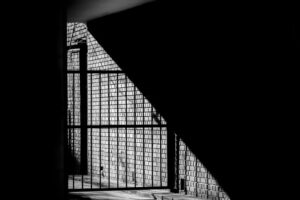
Photograpy 5. Ana Batrićević
Under conditions prescribed by the law, persons convicted for some of the following criminal offences can also be sent to this department: terrorism and international terrorism, criminal offences against humanity and other values protected by international law, severe violations of international humanitarian law committed on the territory of former Yugoslavia from January 1st 1991 that are enumerated in the Statute of International Criminal Court for former Yugoslavia, as well as a criminal offence of assisting the perpetrator of a criminal offence if related to some of the aforementioned criminal offences. Order and safety in the Special department are maintained by the staff of security service within these institutions who have passed specific training and are sent to this department.
Ana Batrićević
